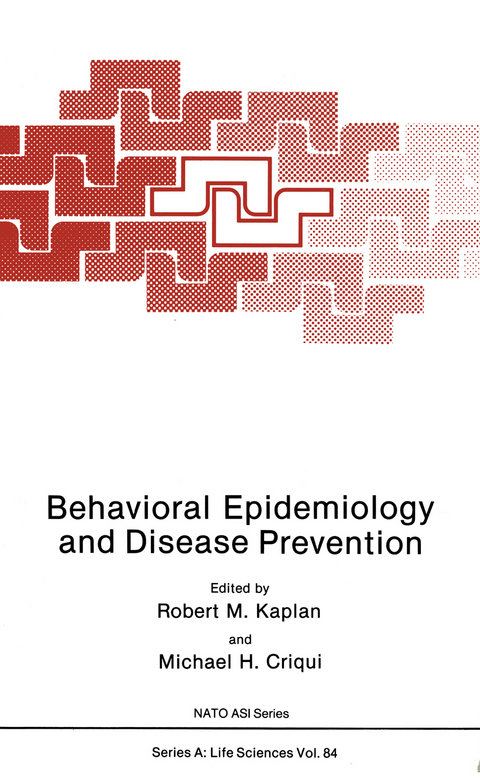
Behavioral Epidemiology and Disease Prevention
Springer-Verlag New York Inc.
978-1-4684-7931-7 (ISBN)
In the l~nited States and in Europe~ there has been an increasing interest in the relationship between individual behavior and disease. The American National Academy of Sciences (Hamberg, Elliott, and Parron, 1982)' through its Institutes of Medicine, has estimated that as many as 50 percent of chronic disease cases can be traced to individual behaviors such as smoking, diet, exercise, etc. Similar conclusions have been reached by a variety of European investigators and institutes. The World Health Organization has also expressed considerable interest in individual behavior in relation to the development of chronic disease. Thus, throughout the NATO countries there has been increased awareness of the relationship between behavior and disease. However, communication among investigators in different countries has been rather limited. Further, many different scientific disciplines including psychology, sociology, medicine, microbiology, statistics, and epidemiology have all developed new and different literatures in this field. One purpose of this book is to bring together contributions from scientists in each of these fields. Much of the variance in individual health behavior occurs across countries rather than within countries. Thus, we can learn much from comparing behavior-disease relationships across countries. To date, there have been few studies which have had an adequate international basis for these comparisons. Interest in behavioral epidemiology is a relatively recent phenomena. Thus, many scientists are entering the field without uniform background, experience, or training. This book discusses approaches common in a variety of NATO countries.
I Methods in Epidemiology.- 1 Reflections on Epidemiologic Methodology in the Study of Disease Etiology and Health Services.- 2 The Problem of Response Bias.- 3 Quantification of Health Outcomes for Policy Studies in Behavioral Epidemiology.- II Epidemiology.- 4 Apolipoproteins, the Lipid Hypothesis, and Ischemic Heart Disease.- 5 Alcohol and Cardiovascular Mortality.- 6 The Pros and Cons of Economic Development.- 7 Regional Differences in Mortality in Belgium.- 8 Dietary Components and the Risk of Coronary Heart Disease Mortality.- 9 The Rationale for Treatment of “Mild” Hypertension.- 10 Dietary Factors and Cancer.- 11 The Control of Diabetes.- 12 Medical Care Utilization and Self-Reported Health of Hypertensives — Results of the Munich Blood Pressure Study.- III Stress.- 13 Life Change, Social Support, Coping, and Health.- 14 Psychosocial Aspects of Chronic Illness: Direct and Indirect Associations with Ischemic Heart Disease Mortality.- 15 Stress, Personality, Immunity, and Cancer: A Challenge for Psychosomatic Medicine.- IV Behavioral Interventions.- 16 Primary Prevention of Hypertension: A Program with Adolescents.- 11 A Family-Based Approach to Cardiovascular Risk Reduction Education.- 18 The Behavioral Management of Type II Diabetes Mellitus.- 19 The Community Studies of the Stanford Heart Disease Prevention Program.- 20 Exercise and Disease Prevention.- Contributors.- Author Index.
| Reihe/Serie | Nato Science Series: A ; 84 |
|---|---|
| Zusatzinfo | IX, 450 p. |
| Verlagsort | New York, NY |
| Sprache | englisch |
| Maße | 178 x 254 mm |
| Themenwelt | Naturwissenschaften ► Biologie |
| ISBN-10 | 1-4684-7931-8 / 1468479318 |
| ISBN-13 | 978-1-4684-7931-7 / 9781468479317 |
| Zustand | Neuware |
| Informationen gemäß Produktsicherheitsverordnung (GPSR) | |
| Haben Sie eine Frage zum Produkt? |
aus dem Bereich


